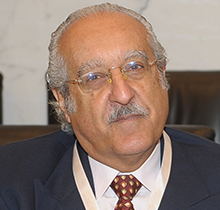In a nutshell
Arab SWFs prefer to target developed economies and those with more established but not necessarily larger capital markets, political stability, a significant degree of confidence in rule of law, and a low degree of corruption.
They are more likely to target strategic industries, such as financial services, mining, telecommunications and utilities.
Arab SWFs would rather invest in larger firms than non-Arab SWFs do; and they put less emphasis on firms’ other characteristics, such as their liquidity, profitability, growth and dividend payout.
Much has been written about the role of sovereign wealth funds (SWFs) on the global investment scene. These institutions are typically state-owned, with large pools of funds mostly derived from the extraction of natural resources, particularly hydrocarbons, and invested internationally.
The operations of SWFs raise many questions about their ultimate objectives, but also the transparency of their accounts and their wider economic impact. As Larry Summers wrote in the Financial Times in July 2007, ‘on any plausible path over the next few years, a crucial question for the global financial system and indeed for the global economy is how these funds will be invested’.
Various authors have tried to infer the underlying objectives that shape SWFs’ portfolios. Are they pursuing the development objectives of their home countries or seeking results that are similar to those of other private institutional investors? While some investigations find that politics sometimes interferes in SWFs’ investment decisions, others observe that they behave like rational institutional investors in most cases.
But compared with other institutional investors, it seems clear that SWFs are more likely to target firms operating in ‘strategic’ sectors – those considered to be potential enablers of development or revenue diversification in their home countries. Such industries may include the financial sector, mining, telecommunications and utilities.
Naturally, the debate extends to Arab SWFs and how they behave compared with their peers. While there is a scarcity of research on Arab SWFs, some commentators suggest that they are less transparent than non-Arab SWFs and may be more focused on pursuing development objectives and the acquisition of strategic businesses.
Some suggest that Arab SWFs would favour investments in industries that may lead global development, contribute to skills acquisition, diversify their home countries’ sources of revenues or increase their political influence in the world economy.
In the context of a comprehensive ERF review of SWFs, our research focuses on the determinants of Arab SWFs’ investment decisions, seeking to provide evidence-based analysis of their investment behaviour (Arouri et al, 2018).
Our study analyses a sample of 223 publicly traded firms targeted by SWFs over the period from 2000 to 2014 . The total number of those deals undertaken by Arab SWFs is 73, representing almost 33% of the total number of observations. The UK has the largest share of SWFs’ targets in the sample (13%), followed by China (12.55%). Only 18 out of the 223 deals were undertaken to acquire firms in Arab countries.
The results of our quantitative analysis reveal a top-down investment strategy in which Arab SWFs first screen target countries or jurisdictions, then target sectors and finally target businesses. Four particular results stand out:
Target economies
Arab SWFs prefer targeting developed economies and those with more established but not necessarily larger capital markets, political stability, a significant degree of confidence in rule of law, and a low degree of corruption.
More than for non-Arab SWFs, target countries’ GDP growth and level of GDP per capita have a positive impact on Arab SWFs’ decisions to direct their investments there. But trade openness does not seem to be an important determinant of Arab SWFs’ investment decisions.
Arab SWFs tend to target firms in countries with more established, but not necessarily larger capital markets. This is derived from the fact that the longer the period between the years of acquisition and establishment of the target country’s main exchange, the likelier a country is to be targeted by an Arab SWF.
Variables capturing political stability, absence of violence, rule of law and corruption also have a positive impact on Arab SWFs’ selection of target countries. But democracy, accountability, government effectiveness and regulatory quality do not appear to figure in Arab SWFs’ consideration of target countries.
Target industries
Arab SWFs are more likely to target strategic industries, such as financial services, mining, telecommunications and utilities.
The average of a variable capturing the ‘strategic’ nature of an industry is 0.71 when the acquirer is an Arab SWF, but only 0.43 when it is a non-Arab SWF.
A variable capturing the ‘strategic’ dimension of the target’s industry has a positive and strongly significant sign. Moreover, the marginal effect points out that being in a strategic sector increases the target’s probability of being acquired by an Arab SWF by more than 24%.
Target firms
Arab SWFs would rather invest in larger firms than non-Arab SWFs do; and they put less emphasis on firms’ other characteristics, such as their liquidity, profitability, growth and dividend payout.
The natural logarithm of average market capitalisation is 14.38 when the acquirer is a non-Arab SWF, but increases to about 15.60 when the acquirer is owned by an Arab SWF.
A measure capturing the target’s size is positive; and an increase of one unit in firm size raises the likelihood of being acquired by an Arab SWF by almost 8%.
Robustness of the results
Finally, most of these conclusions stand up to a set of robustness checks, notably regarding the relatively large number of industry and finance deals, those that took place during the financial crisis of 2007-09 or acquisitions by the Singaporean and Qatari SWFs.
Conclusions
The foregoing are direct quantitative results based on the sampled SWFs. They could suggest a number of assumptions as to their interpretation and rationale that lead Arab SWFs to behave in the way that the analysis reveals. Such assumptions, while possibly consistent with the results, would deserve more calibrated research.
For example, by themselves, these results do not allow for statements that Arab SWFs pursue political objectives in their investment decisions. They may or may not.
Similarly, a larger weight given to risk mitigation in the risk-return trade-off does not by itself imply that non-financial business considerations have a determining role in Arab SWFs’ behaviour. Growing economies with long established stock markets, political stability, respect of rule of law and limited corruption are features of risk aversion.
The result that the liquidity, profitability, growth and dividend payout of target firms figure less prominently in explaining the likelihood of their acquisition by an Arab SWF may reflect the fund’s longer time horizon, less immediate liabilities requirements or, more generally, a different intertemporal perspective.
In summary, we can reasonably say that Arab SWFs seem to be aiming to diversify the future incomes of their home countries, seeking industries that are the mainstay of any economy. While finance and mining may be cyclical, utilities and some transport may be defensive, and in combination these sectors may mitigate the impact of cyclical downturns. Thus, it seems that in the risk-return trade-off, Arab SWFs may put significantly more weight on risk mitigation than on returns.
Further reading
Arouri, Mohamed, Sabri Boubaker and Wafik Grais (2018) ‘On the Determinants of Sovereign Wealth Funds’ Investments: Are Arab SWFs Different?’, ERF Working Paper No 1174.
This study is part of the ERF project ‘Sovereign Wealth Funds: Stabilization, Investment Strategies, and Lessons for the Arab Countries’, led by Ibrahim Elbadawi and Diaa Noureldin.




